Companion planting brassicas helps to save space, prevent disease and pests, and keep weeds at bay, while improving the taste and flavor of your crops.
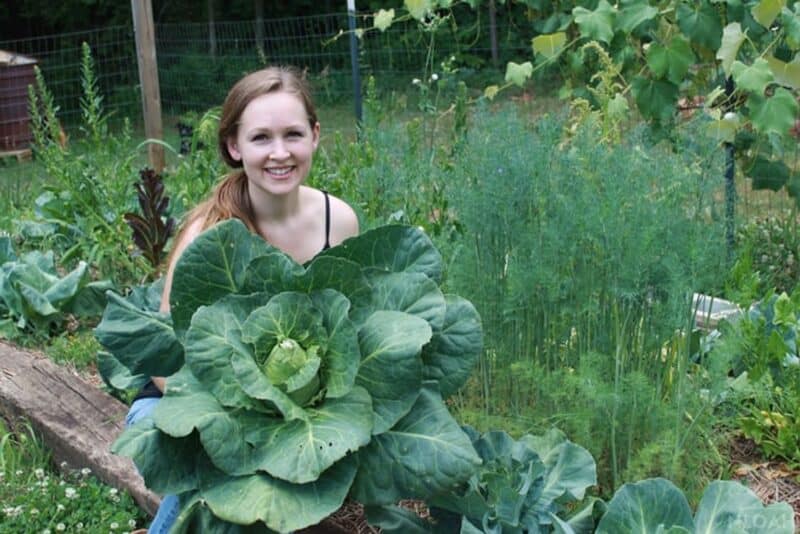
Generally considered cool weather crops, brassicas – such as cabbages, broccoli, cauliflower, kale, kohlrabi, Swiss chard, turnips, and Brussels sprouts – serve as pretty easy going companions to most plants.
Let’s take a look at what to plant and what not to plant your cabbages with. We’ve even made a PDF checklist with all of them at the end of this article that you can print out.
Brassica Requirements
When you’re planting anything with the view of companion planting, you need to consider the physical needs of the crop as not to plant anything that disrupts these requirements.
Luckily, brassicas are quite chilled out about conditions. They’re cool weather plants that mature in six to eight weeks and can survive in a range of scenarios. While they like loamy soil, they perform pretty well in clay soil.
Equally, while the full sun certainly helps, brassicas will still provide a great yield with some partial shade too. In this respect, you can plant them close to taller plants that may mottle the sunlight without having to worry.
Be aware that brassicas can be quite thirsty. They like a significant amount of water and moist soil, without being water-logged. Placing them with other water-thirsty plants will mean that neither species get enough water, or one out-competes the other.
Brassicas also like a lot of nutrients, so planting them with other heavy feeders causes them to go into competition and can also stunt growth.
| Good Companions for Brassicas | Bad Companions for Brassicas |
|---|---|
| ✅ Agastache | ❌ Cucumbers |
| ✅ Soybeans | ❌ Pumpkins |
| ✅ Buckwheat | ❌ Watermelon |
| ✅ Carrots | ❌ Strawberries |
| ✅ Marjoram | ❌ Radish |
| ✅ Spinach | ❌ Grapes |
| ✅ Bush and Pole Beans | ❌ Nightshades |
| ✅ Dill | ❌ Squash |
| ✅ Beets | ❌ Potatoes |
| ✅ Celery | ❌ Rue |
| ✅ Calendula | ❌ Lettuce |
| ✅ Marigolds | ❌ Mustard plants |
| ✅ Sage | ❌ Tomatoes |
| ✅ Garlic | ❌ Sweetcorn |
| ✅ Hyssop | ❌ Asparagus |
| ✅ Tansy | |
| ✅ Coriander | |
| ✅ Thyme | |
| ✅ Chamomile | |
| ✅ Borage | |
| ✅ Onions | |
| ✅ Rosemary | |
| ✅ Leeks | |
| ✅ Basil | |
| ✅ Mint | |
| ✅ Yarrow | |
| ✅ Nasturtiums |
Good Companion Plants for Brassicas
Brassica companions can improve yield and flavor by enhancing soil conditions and increasing pollination, or can serve to deter pests and disease.
Some great companion plants for brassicas are onions, garlic dill, beans, borage, marigold, chives, basil, and nasturtium.
But let’s take a look at the full list of companion herbs and other vegetables to choose from…
Enhance Productivity and Flavor
Agastache – Attracts bees which help with pollination to increase yield.
Alliums – Any kind of alliums are a good idea to plant near your brassicas. A few of the best alliums to consider include garlic, onions, etc. These have a strong aroma and also have sulfur in them that can improve the growth and taste of your brassicas. They also repel pests.
Buckwheat – Buckwheat isn’t a plant that many gardeners think about growing in their gardens, but it is a good idea. It can attract parasitic wasps, which sound dangerous and harmful, but are actually beneficial in that they kill cabbage worms.
Bush, Beans, Runner Beans, and Pole Beans – Legumes fix nitrogen in the soil by absorbing it from the air and transferring it to the ground. Chop and drop speeds up this process.
Soybeans – Soybeans also work as nitrogen fixers and provide cover to prevent weeds from competing for nutrients.
Beets – Beets put manganese and iron into the soil when their leaves drop. Be careful not to plant them next to beans as they’ll stunt the growth of the beans.
Borage – Borage mines minerals from deep in the ground with its taproot, which infiltrates the soil with leaf drop – a great chop and drop mulch plant. Borage also attracts bees to help with pollination.
Buckwheat – Buckwheat can mine nutrients from the soil and air that are not generally available to other plants – especially brassicas.
Carrots – Carrots serve to loosen the soil for brassicas, helping them to anchor roots more effectively and grow taller and stronger.
Dill – Dill enhances the flavor of brassicas, while also stimulating growth. Don’t plant dill near carrots.
Marjoram – Marjoram improves the flavor of pretty much any plant it is placed next to.
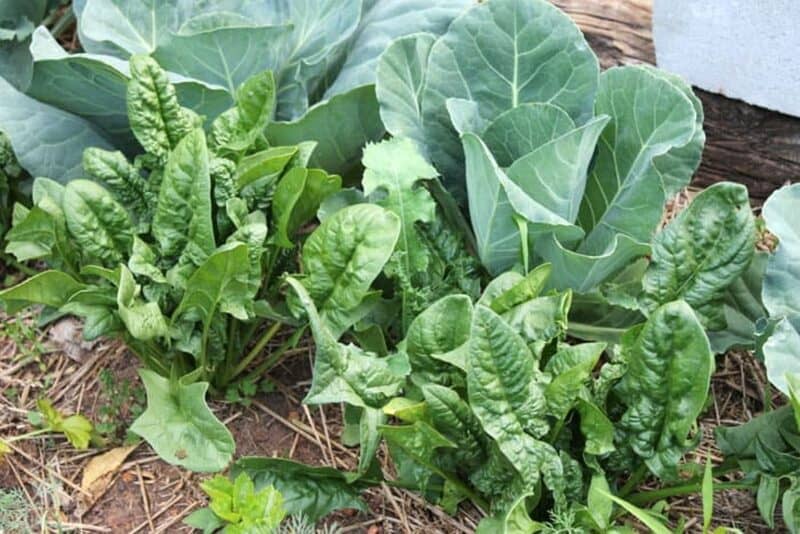
Rosemary – Rosemary is a great option for planting near brassicas and members of the cabbage family. It has a strong scent that can confuse pests, like cabbage white butterflies, and carrot flies. Plant it fairly close to the brassicas and there’s a good chance the pests will land on the rosemary instead!
Spinach – Spinach works as a complementary cold-weather plant, serving as a cover crop to keep weeds back.
Sunflowers – Sunflowers are beautiful and majestic plants that can reach heights up to 10 feet tall! Not only do they add visual interest to any garden, but they also provide shade for brassicas when temperatures climb too high. Plus, their large leaves help keep pests away from your brassicas.
Nasturtiums – This cover crop works really well with brassicas as it spreads below them and keeps the soil moist. Teamwork! They can also attract beneficial insects and repel bad ones.
Nasturtiums are known as a “trap crop,” which means they either repel or distract a range of common brassica pests species. They can also help to shade the soil to keep conditions nice and cool for your cold-loving brassica plants.
Tansy – Tansy helps retain potassium in the soil, which is why it’s beneficial to have not just around brassicas, but around other veggies as well. Definitely keep this one in mind.
Yarrow – Yarrow will provide partial shade to your cabbage, which is an absolute must under the scorching sun. This plant can bring a number of nutrients towards the surface of the soil including potassium and phosphorus.
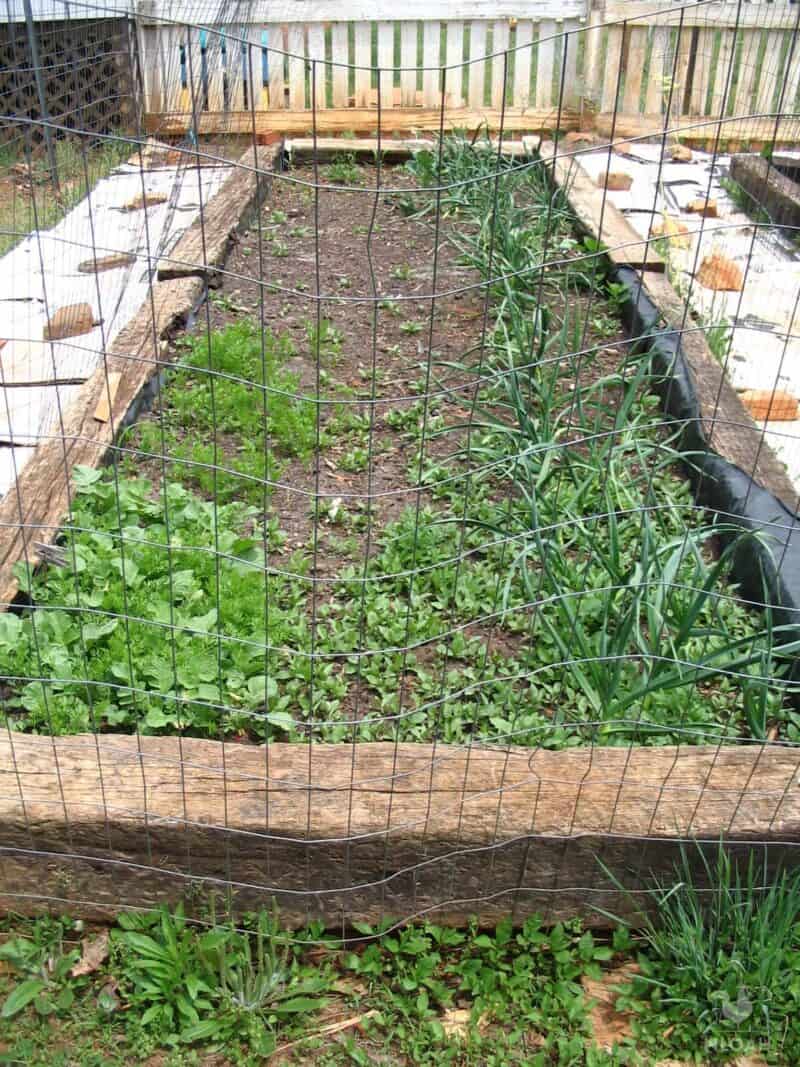
Pest Management
Agastache – Plant agastache a row away from brassicas as it will work to attract cabbage moths away from your brassicas, while still serving to attract pollinators.
Borage – Borage deters cabbage moths.
Celery – Celery deters a whole bunch of pests that are damaging to brassicas, especially cabbage worms.
Onions – The pungent scent of onions deters all kinds of pests, especially maggots. Don’t plant onions near peas or beans as they stunt the growth of these legumes.
Calendula – Calendula produces a chemical in its root that kills nematodes while also attracting pollinators with the bright colors of the flowers.
Chamomile – Brassica pests don’t like the smell of chamomile, which also attracts pollinators.
Dill – Dill also works to repel cabbage loopers.
Mint – Mint is an excellent pest repellent in general and will do its job when planted with your cabbage. The two play well together.
Marigolds – Marigolds (Tagetes) also release a chemical that kills nematodes, while also deterring numerous other pests and attracting pollinators.
Plus, French marigolds in particular are prized as some of the best companion plants because their roots exude substances that help protect nearby plants from root-knot nematodes (tiny worms that feed on plant roots). They have a profound ability to repel various pests and improve soil fertility.
Parsley – Another excellent herb to consider is parsley, which can help keep away aphids, spider mites, and other common pests.
Oregano – Oregano provides nitrogen to the soil which can increase the growth rate of nearby brassicas.
Rosemary – Rosemary’s scent repels cabbage moths.
Sage – The scent of sage keeps brassica pests away, including slugs.
Thyme – The smell of thyme keeps away cabbage loopers and cabbage worms.
Garlic – Garlic repels aphids and Japanese beetles
Coriander – You’re probably more familiar with the name cilantro, but regardless, this plant will repel certain insects that like to feast on cabbage.
Hyssop – Hyssopus will help repel cabbage butterflies as well as flea beetles, so be sure to plant a few in-between your cabbages.
Leeks – Leeks can repel the dreaded cabbage whiteflies, as well as white caterpillars… plus they make excellent additions to a variety of recipes.
Poor Companions for Brassicas
Don’t plant brassicas with:
Sweetcorn / Asparagus / Pumpkins / Watermelons / Rue / Grapes – All these plants are heavy feeders that take nutrients away from brassicas, most especially calcium.
Strawberries – Strawberries are notorious for attracting slugs that will devastate your brassica crop.
Nightshades – Nightshades attract verticillium wilt, which will damage brassicas. This is especially true of peppers and eggplant.
Radish – Radishes just don’t like brassicas, and neither performs well when planted together.
Rue – While rue does repel some pests, rue may leech certain chemicals into the soil that your cabbages won’t appreciate. There are plenty of other pest-repelling companions out there, so it’s best to leave this one aside.
Tomatoes – Tomatoes will stop growing when planted around cabbage, so it’s best to avoid this rookie mistake.
Lettuce – This is another common veggie that will see its growth inhibited when planted next to brassicas.
Potato – Both potatoes and cabbages need a lot of nutrients from the soil, so when you plant them together, they’ll compete for them. Best not to plant them together.
Squash – Just like potatoes, squash are heavy feeders, and for this reason, it’s best to avoid planting them with your brassicas.
Cucumbers – Avoid cucumbers next to brassicas as they have a tendency to spread around, inhibiting cabbage growth.
Can You Plant All Brassicas Together?
One problem with planting all brassicas together is that each vegetable has different requirements when it comes to growing conditions.
For example, some brassicas require more water than others while some need full sun while others prefer partial shade. Soil type can also play a role; for instance, some brassicas do best in loamy soil while others prefer sandy soil.
Most problematic, though, is that brassicas, when planted together, will attract similar pests and diseases. That means you may wind up with a bigger problem on your hands by grouping these closely-related plants together.
For best results, spread them out – and grow a few of these companion plants in between to confuse all those pests!
To Sum Up…
Brassicas are quite easygoing plants that provide a great yield in various conditions. However, pests like cabbage loopers, cabbage worms, and cabbage moths can really have an impact on their development and your resulting yield.
Getting companions in the ground that have strong aromatic properties help to deter these pests and lead to healthy growth for brassicas. Equally, plants like agastache can pull these pests away from your brassicas, so having a healthy supply a row away will work well for you.
Try to find plants that harvest nutrients and place them in the topsoil, like dynamic accumulators, such as buckwheat and borage, and nitrogen fixers, like beans and peas.

These lists are rather long, so we’ve put them both in a convenient PDF that you can print out and add to your garden planner. You can get it right here.
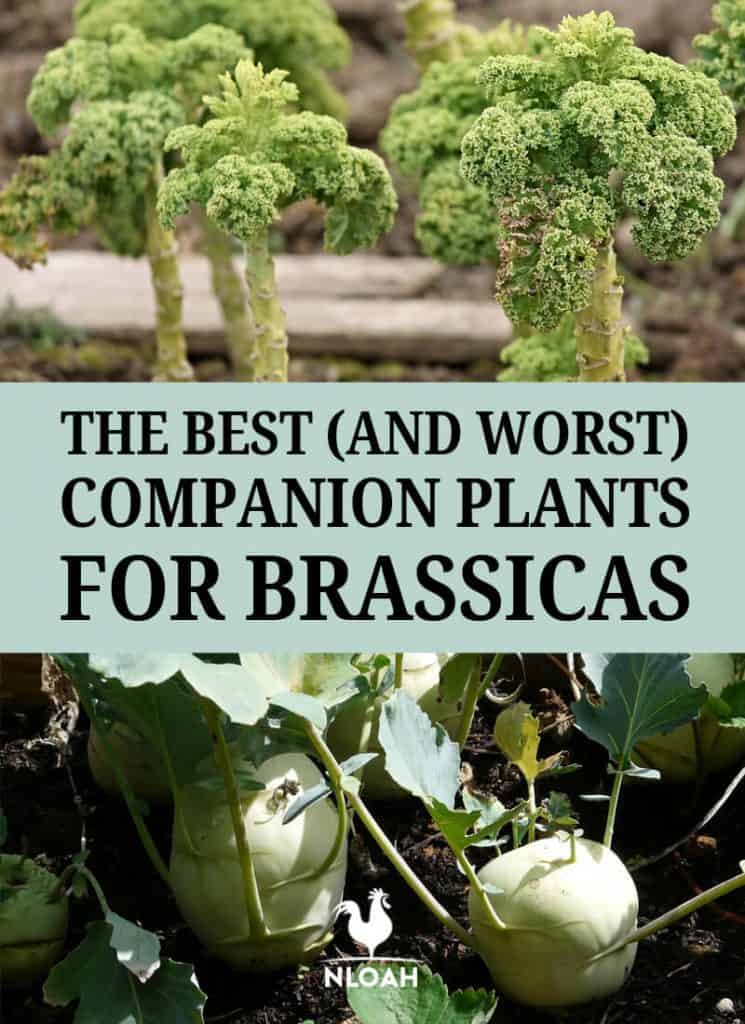
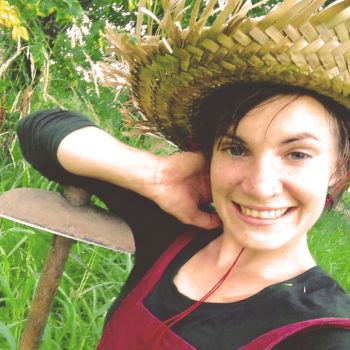
Emmy Jenkins, AKA Permie Emmy, has spent many years traveling around the globe and working remotely, dipping her toes into a myriad of disciplines. Having spent several years volunteering on sustainable farms, Emmy chose to delve deeper into permaculture theory to understand the social and economic patterns often neglected in the philosophy. When she’s not planting edible gardens and frolicking the jungle, she’s consulting on projects around the world to help permaculturalists to understand regenerative ‘Fairshare’ economic patterns and to encourage People Care patterns that focus on biomimicry.

You say radish are a poor companion for brassicas but radish is a brassica, at least here in the UK!
And brassicas don’t do well together